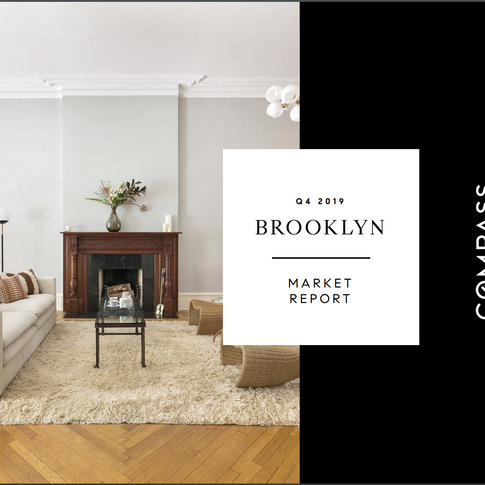While prices and sales volume declined again in the final quarter of 2019, Q4 actually saw the lowest rate of decline since the fall of 2017. An uptick in activity in the last month of the year -- and another drop in interest rates at the start of the year -- hopefully leads to further stabilization in the first half of 2020. Our analysis is below, along with links to Compass’s Q4 Market reports for even more data and details.
A “wait and see” approach by Manhattan buyers, coupled with anxious sellers, continued to weigh down prices this fall. As a result, 2019 price figures settled to their lowest year-end levels in five years, with average price falling 10% to $1.862M and median price—less skewed by high or low prices—slipping 3% to $999K to remain below $1M for a second quarter in a row. Manhattan’s luxury market saw sales over $5M drop 41%. It's important to keep some perspective on these figures: even at the lowest point this year, prices remained nearly 15% higher than ten years ago.
While days on market continued to increase, other metrics were neutral or slightly improved relative to the prior year. Manhattan sales volume were almost even with this time last year, and prices in some product types have begun to bounce back. Inventory is lower, and mortgage rates have remained steady. We saw a 1% uptick in resale co-op sales and an 11% boost in new development sales, but overall sales figures were brought down by a 13% drop in resale condo sales. Signed contracts in the final quarter, however, were up from 2018 figures for a third consecutive quarter—improving 4% annually—suggesting that demand, after four years of declines, may finally begin to absorb supply.
In a market hungry for improvement, the last quarter’s results leave us cautiously optimistic as we enter the new decade.
BROOKLYN
Much like the first half of 2019, sales activity in the second half of the year in Brooklyn moderated compared to a very strong 2018, though prices continued to rise. Average price across the borough hit its highest figure in any fourth quarter, and median price did the same, this year hitting a record high of $800,000. While these figures only represent a marginal increase, median price per square foot increased by double-digits in the final quarter of 2019. This reflects a shift towards smaller apartments, as many buyers chose to hold firm on price by opting for smaller homes -- indicative of a greater overall price sensitivity in the market.
Properties in the $500K-1M segment made up 36% of inventory in the final quarter, but accounted for 47% of closings, and competition for these units resulted in a 2% higher average price per square foot. For properties priced in the $1-2M range, inventory outpaced closings, but price per square foot increased 6% versus 2018 because units in this price tier were also 5% smaller compared to past years. Properties priced $2M and higher made up just 6% of all recorded sales, and these units offered the largest average discount. The $3M+ segment saw a decrease in average price per square foot, as more of this inventory was made up of townhomes instead of luxury condos compared to last year.
Days on market increased for properties over $1M as Brooklyn buyers also lost some of the sense of urgency that has driven the Brooklyn market to record-fast sales in previous years. By product type, co-ops had the smallest market share but moved the quickest, with 42% of listings entering contract in the first 59 days on market. Mirroring a trend across the river in Manhattan, condos (particularly new development), which commanded the highest average price per square foot figures in the borough, were the slowest to enter contract -- just 32% entered contract in the first 59 days, while 32% took 180+ days.
.png)





